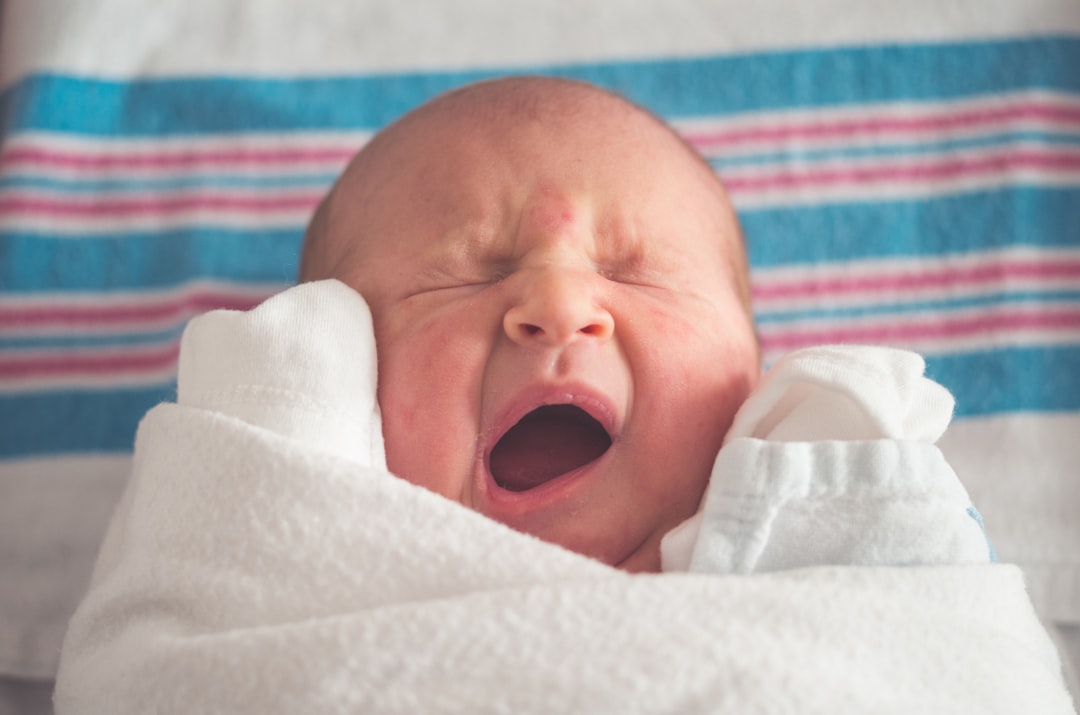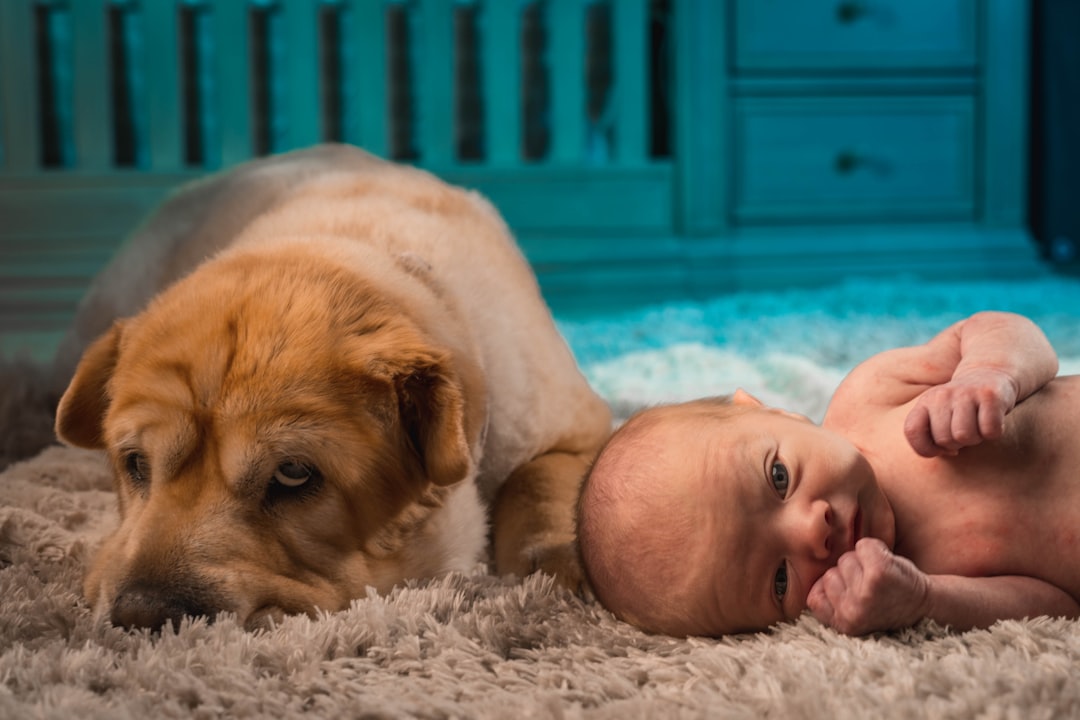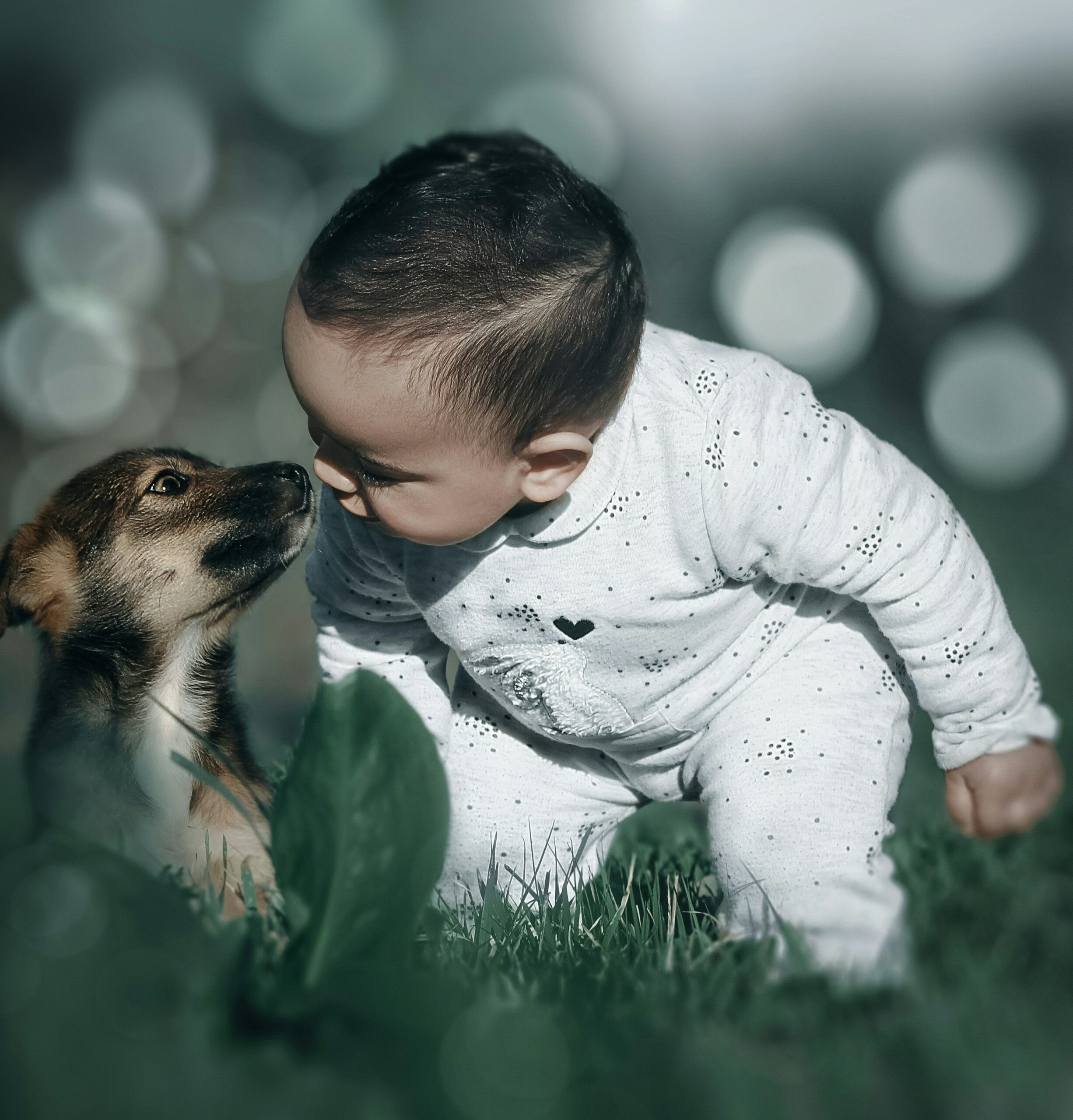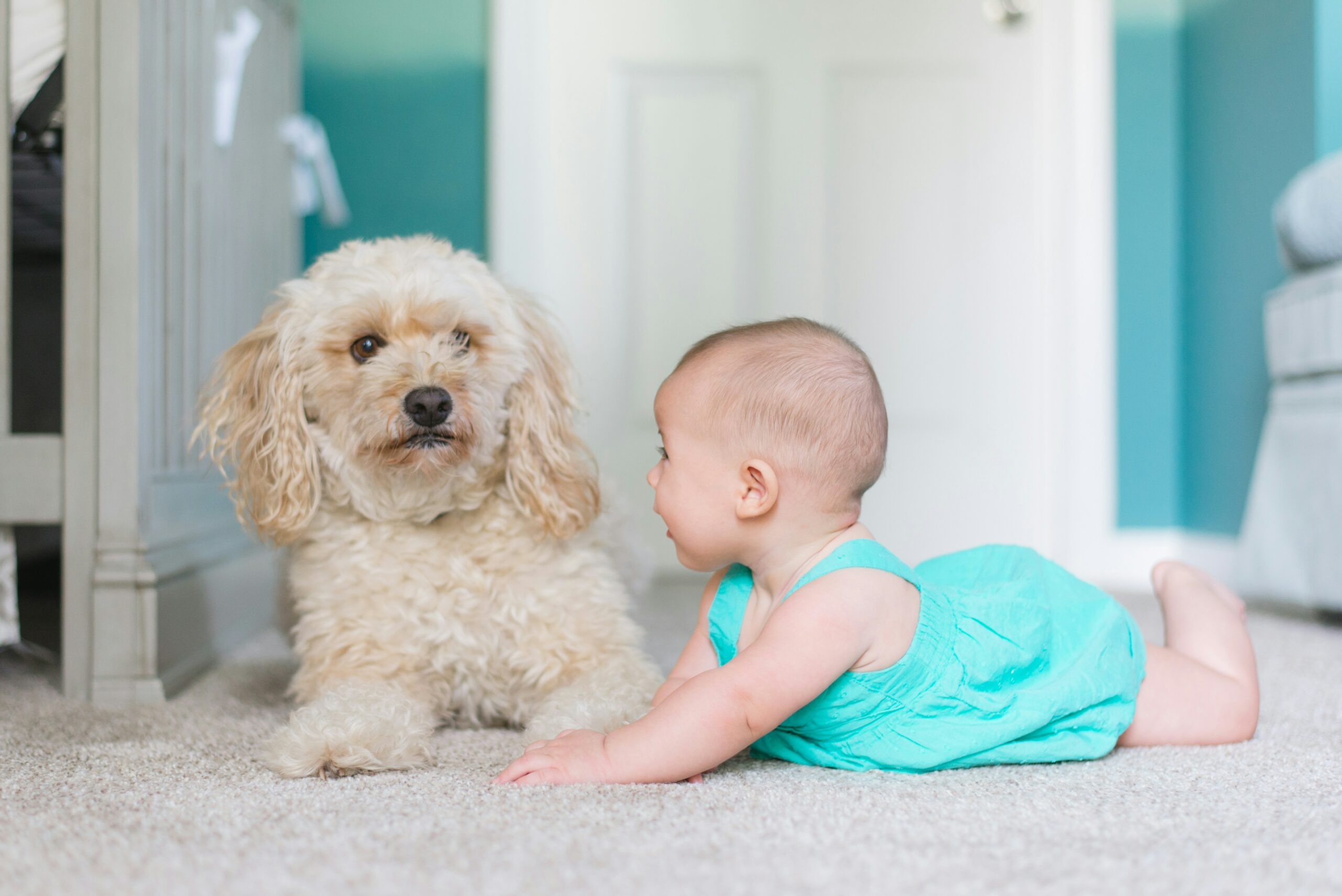Navigating the Dog-Baby Dynamic: Tips for a Harmonious Relationship
Learn how to introduce dogs and babies while addressing common challenges to ensure a safe and harmonious environment for both, with tips on recognizing stress signs, preparing your dog, making initial adjustments, and ensuring ongoing safety and harmony.
Introduction: Understanding the Dynamics of Dogs and Babies Interaction
When introducing dogs and babies, it is important to understand the dynamics to ensure a positive experience for both. One common challenge is preparing the dog for the arrival of a new baby. This involves teaching the dog important new skills, such as basic manners and adjusting to lifestyle changes, to create a seamless transition. For instance, acclimating the dog to new experiences like baby sights, sounds, and smells can help in easing the adjustment period and preventing potential stress.
Moreover, recognizing the signs of stress in dogs around babies is crucial for preventing conflicts and ensuring the safety of both the dog and the baby. Subtle signs like tongue flicking and averting eye contact can indicate stress in dogs, and introducing measures like baby gates to separate the dog and baby when unsupervised can prevent any unwanted incidents. Understanding these stress signs and responding appropriately can help in fostering a harmonious relationship between the dog and the baby.
Recognizing Dog Stress Signs
Recognizing stress signals in dogs is crucial when introducing them to babies to ensure a smooth transition and prevent potential conflicts. Apart from the common signs like tongue flicking and avoiding eye contact, dogs may also exhibit behaviors like excessive panting, yawning, or pacing when feeling stressed around infants. For instance, if a dog starts excessively licking its lips or suddenly becomes hyper-vigilant in the presence of a baby, it could indicate underlying stress that needs to be addressed. Understanding these subtle cues allows pet owners to intervene early, creating a positive environment for both the dog and the baby.
In addition to identifying stress signs, introducing designated times for intentional interactions between the dog and the baby can help build a positive relationship. By allowing supervised, structured play sessions where the dog and the baby can interact under controlled circumstances, pet owners can facilitate bonding and minimize the risk of misunderstandings or stress-related incidents. Moreover, teaching children to respect the dog’s space and signals is essential in preventing stress escalation and fostering a safe environment for both the pet and the infant. Through these proactive measures, pet owners can proactively address challenges and promote a harmonious coexistence between their dog and new family member.
Preparing Your Dog for the New Baby
In addition to basic obedience training, teaching your dog important new skills before the baby’s arrival is essential in ensuring a harmonious environment. These skills may include desensitizing your dog to baby-related stimuli, such as the sound of a crying infant, to prevent anxiety or fear responses. For instance, playing recordings of baby noises at a low volume initially and gradually increasing the volume can help your dog acclimate to these new sounds. Moreover, practicing walking your dog alongside a stroller can familiarize them with the equipment they will encounter when the baby arrives, reducing potential stress during walks with the newborn.
Furthermore, incorporating positive reinforcement techniques during training sessions can strengthen the bond between the dog and the owner, creating a positive association with the upcoming changes in the household. For example, rewarding your dog with treats and praise when they display calm behavior around baby items can reinforce positive conduct and encourage similar behavior in the future. By introducing these preparatory measures, pet owners can proactively address challenges and set the stage for a successful transition when the baby becomes a part of the family dynamic.
First Introductions and Initial Adjustments
When introducing a new baby to a dog, it is essential to create a detailed plan that includes gradual introductions and positive reinforcement techniques. For example, the dog can be introduced to the baby’s scent through items like blankets or clothing before the actual meeting takes place. This can help familiarize the dog with the baby’s smell and reduce any anxiety during the first encounter. Additionally, setting up a designated safe space for the dog where they can retreat to when feeling overwhelmed or tired is crucial. This safe area should be a quiet and calming place where the dog can relax and have some alone time, away from the hustle and bustle of a new baby in the house.
Moreover, troubleshooting any issues that arise during the initial interactions is key to ensuring a smooth adjustment period for both the dog and the baby. For instance, if the dog shows signs of nervousness or aggression towards the baby, it is important to address these behaviors promptly. Seeking professional help from a certified dog trainer or behaviorist can provide valuable insights and techniques to manage and modify the dog’s behavior effectively. Consistent supervision during the initial introductions is crucial to prevent any unwanted incidents and to create a positive environment for the dog and the baby to bond safely. By focusing on positive reinforcement and gradual exposure to the new family dynamics, the first interactions between the dog and the baby can lay a solid foundation for a harmonious relationship in the long run.
 Ensuring Ongoing Safety and Harmony
Ensuring Ongoing Safety and Harmony
To ensure the ongoing safety and harmony between dogs and babies, it is crucial to teach children the importance of respecting the dog’s space and signals. For instance, children should be instructed to recognize when a dog wants to be left alone and understand the signs of stress that the dog may exhibit, such as lip licking or turning away. By educating children on these cues, it helps prevent stress escalation and minimizes the risk of conflicts.
Additionally, incorporating structured play sessions and gentle petting into the daily interactions between the child and the dog can significantly contribute to building a positive relationship. For example, supervised playtime where the child engages with the dog in a calm and respectful manner can foster trust and companionship between them. This positive interaction lays the foundation for a harmonious bond and enhances the overall well-being of both the dog and the child.
Moreover, creating designated times for intentional interactions between the dog and the baby is essential for fostering a strong bond while ensuring safety. By scheduling specific moments for supervised play or bonding activities, both the dog and the baby can learn to communicate and interact positively. This structured approach not only strengthens their relationship but also provides a safe environment for them to engage with each other under the watchful eye of a caregiver, promoting a secure and harmonious dynamic.
Training and Behavior Modification
When preparing your dog for the arrival of a new baby, it’s essential to focus on training and behavior modification to ensure a safe and positive interaction. For example, teaching your dog to respond to basic obedience commands like “sit,” “stay,” and “leave it” can help establish boundaries and manners that are crucial when around a baby. Additionally, enrolling your dog in specialized training programs that cater to family dynamics and the presence of infants can provide valuable skills and guidance on how to navigate this new environment successfully.
Moreover, behavior modification plays a vital role in shaping your dog’s responses and reactions around the baby. By seeking professional help from certified dog trainers or behaviorists, you can address any concerning behaviors proactively and work towards resolving them effectively. These experts can provide insights into understanding your dog’s body language, triggers, and stressors, allowing you to create a tailored plan to modify behavior and foster a safe environment for both your dog and your baby. Remember, ongoing supervision and consistent training are key components in ensuring a harmonious and secure relationship between your dog and your new family member.
Long-term Considerations
When considering the long-term well-being of both your dog and your baby, it is crucial to provide your pet with a designated quiet place where they can retreat to whenever they feel overwhelmed or in need of some downtime. This safe space can be a cozy corner with their bed, toys, and blankets, allowing them to relax and recharge away from any disturbances. For example, if your dog displays signs of stress or simply needs a break from the baby’s energy, having a quiet retreat can prevent potential conflicts and ensure a harmonious environment for everyone in the household.
Moreover, establishing specific resting and sleeping areas for your dog is essential for their comfort and overall happiness. By creating a consistent routine around bedtime and nap times, you can help your dog feel secure and content, reducing any potential tension that may arise from sharing sleeping spaces with the baby. For instance, setting up a comfortable dog bed in a quiet corner of the house away from the baby’s room can provide your pet with a designated area to rest undisturbed, promoting relaxation and minimizing any disruptions to their sleep patterns.
Additionally, ongoing supervision and adherence to proper hygiene practices are paramount for maintaining a safe and healthy environment for both your dog and your baby in the long run. Regularly cleaning and disinfecting shared spaces, washing your hands after handling your pet, and ensuring that your dog’s living areas are kept clean can help prevent the spread of germs and reduce the risk of any health concerns for your family members. By prioritizing supervision and hygiene, you can create a secure setting where your dog and baby can thrive together while minimizing potential risks to their well-being.
Conclusion: Building a Strong Foundation for a Positive Dog-Baby Relationship
In conclusion, establishing a strong foundation for a positive relationship between dogs and babies involves thorough preparation, consistent training, and ongoing supervision. By proactively addressing potential challenges and introducing gradual adjustments, pet owners can create a harmonious environment where both dogs and babies can coexist safely. For instance, teaching dogs basic obedience skills and acclimating them to baby-related experiences can help in ensuring a smooth transition when the new family member arrives.
Moreover, patience, consistency, and positive reinforcement play key roles in fostering a healthy dynamic between dogs and babies. For example, creating designated times for intentional interactions between the dog and the baby can facilitate bonding and minimize the likelihood of conflicts. By prioritizing the safety and well-being of both the dog and the baby through continuous supervision and education, families can enjoy a happy and stress-free environment that promotes positive interactions. It is essential to remember that every interaction contributes to shaping the relationship between dogs and babies, making it crucial to approach the process with care and diligence.


